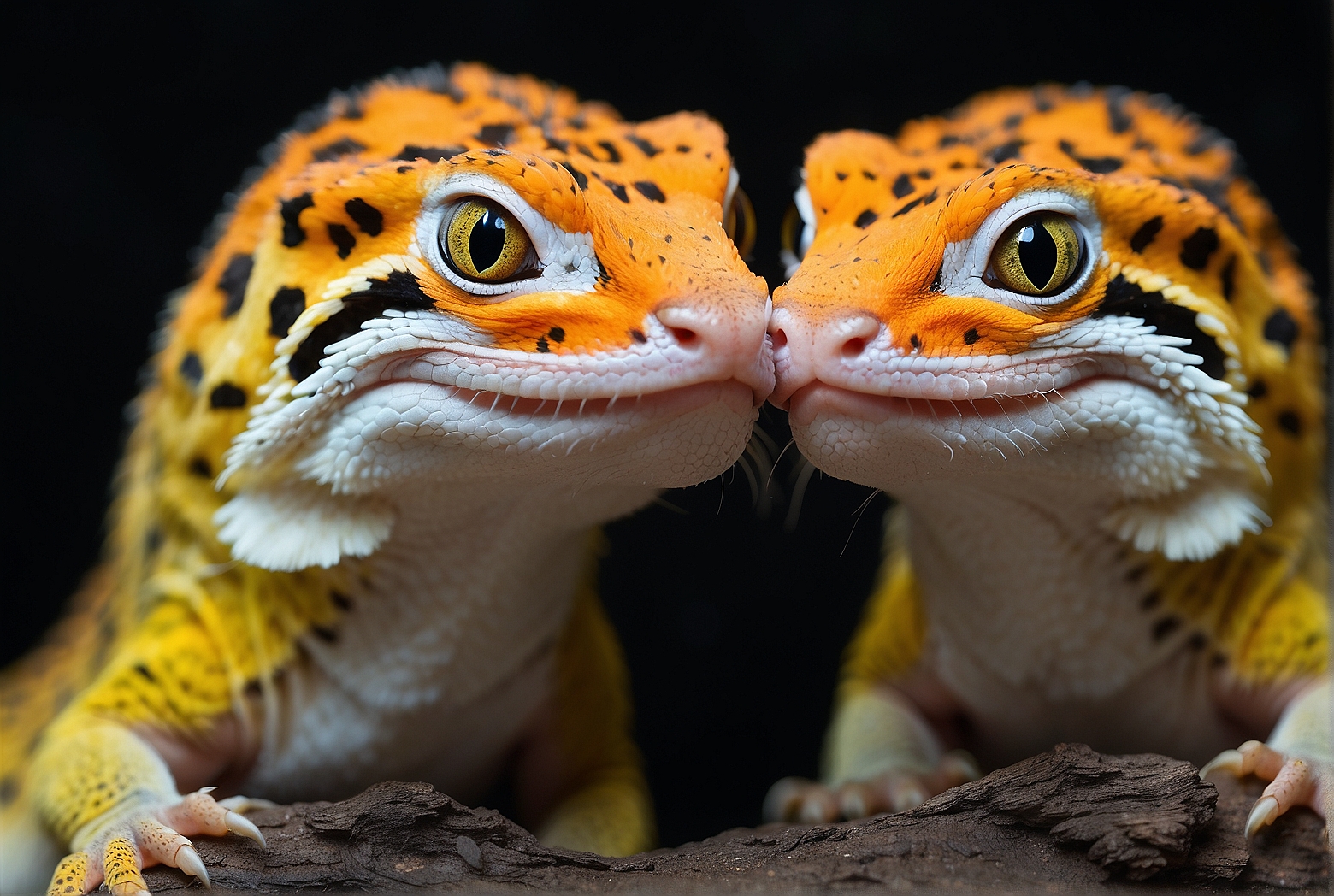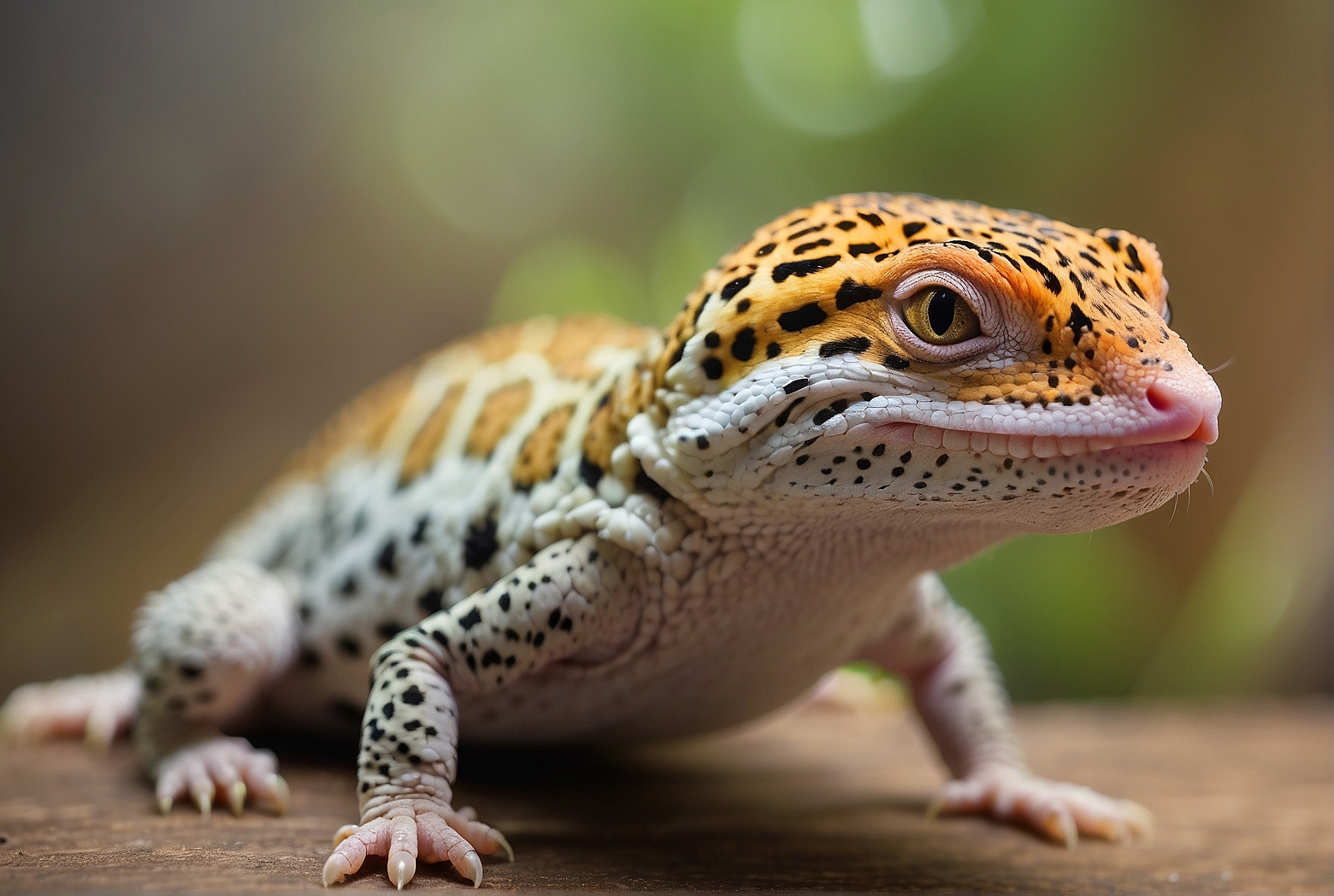Imagine the joy of owning a leopard gecko – those vibrant colors and striking patterns, truly a mesmerizing sight. And now, picture yourself leaning in to give it a gentle peck. But hold on a second, is it actually okay to kiss your leopard gecko? This article will provide you with all the essential information you need to make an informed decision about this affectionate gesture. So, let’s unravel the mystery surrounding the age-old question: Is it safe to smooch your leopard gecko?
Understanding Leopard Geckos
Leopard geckos are fascinating reptiles known for their unique behavior and striking appearance. By understanding their behavior, anatomy, and how to bond with them, you can create a strong and loving connection with your leopard gecko.
Leopard Gecko Behavior
Leopard geckos have a wide range of behaviors that can provide insights into their needs and emotions. They are usually docile and enjoy being handled, but it’s essential to approach them with care and respect. They are primarily nocturnal creatures, so they are most active during the night. Observing their behavior can help you better understand their preferences and mood.
Leopard Gecko Anatomy
To develop a deeper understanding of your leopard gecko, it’s important to familiarize yourself with their anatomy. Leopard geckos have distinct features, including soft scales, a long tail they use for storing fat, and a unique pattern on their skin. Knowing their body structure will help you handle them properly and recognize any potential health issues.
Bonding with Your Leopard Gecko
Building a strong bond with your leopard gecko is a rewarding experience for both of you. It requires patience, consistency, and respect. By spending time with your gecko, handling them gently, and creating a safe environment, you can establish trust and nurture a loving relationship.
The Importance of Proper Handling
Proper handling is crucial for the well-being and happiness of your leopard gecko. By mastering the art of handling, you can avoid stress, prevent injuries, and build a strong foundation of trust.

Avoiding Stress
Leopard geckos are sensitive creatures, and stress can be detrimental to their health. When handling your gecko, be gentle, and avoid sudden movements or loud noises. Provide a quiet and calm environment to help them feel at ease.
Preventing Injuries
Leopard geckos have delicate bodies, and mishandling them can lead to injuries. Always support their body when you pick them up, keeping their tail straight to prevent any damage. Avoid grabbing them forcefully or squeezing them too tightly.
Building Trust
Trust is the key to a successful bond with your leopard gecko. Start by offering your hand for them to sniff and explore before attempting to pick them up. Make handling sessions gradual and short initially, gradually increasing the duration as your gecko becomes more comfortable. With time, patience, and positive reinforcement, your gecko will learn to trust you.
Potential Risks
While leopard geckos are generally healthy creatures, there are potential risks to be aware of in order to keep them safe and protected.
Bacterial Infections
Leopard geckos can be susceptible to bacterial infections, which can cause serious health issues. Keeping their enclosure clean, providing proper hygiene, and regular check-ups with a veterinarian can help prevent such infections.
Transmission of Diseases
It’s important to practice proper hygiene when handling your leopard gecko to avoid the transmission of diseases. Wash your hands before and after handling your gecko, and avoid cross-contamination with other pets or animals.

Ingestion of Harmful Substances
Leopard geckos are curious creatures and may accidentally ingest harmful substances. Ensure that their enclosure is free of any toxic plants, chemicals, or objects that could pose a risk to their health.
How Geckos Communicate
Understanding how leopard geckos communicate is crucial for a harmonious interaction and a strong bond.
Understanding Body Language
Leopard geckos use body language to convey their emotions and intentions. Pay attention to their tail position, body posture, and eye movement to gauge their mood. A raised tail may indicate curiosity or agitation, while a flattened body could mean fear or submission.
Recognizing Warning Signs
Leopard geckos may exhibit warning signs when they feel threatened or uncomfortable. These can include hissing, tail vibrations, or even biting. If you notice any of these warning signs, give your gecko some space and allow them to calm down before attempting to handle them again.
Identifying Comfortable Interactions
Recognizing when your leopard gecko is comfortable is key in establishing a positive relationship. Look for relaxed body language, steady movements, and a willingness to explore or climb onto your hand. These behaviors indicate that your gecko is enjoying the interaction and feels safe and secure with you.
Respecting the Natural Behavior
Leopard geckos have evolved to survive in their natural habitats, and it’s crucial to respect their instincts and provide them with an environment that meets their needs.
Leopard Gecko Survival Instincts
Leopard geckos have instinctual behaviors that are important for their well-being. They may exhibit behaviors such as hiding, hunting, or basking under a heat source. Providing a suitable enclosure that mimics their natural habitat allows them to engage in these behaviors and feel secure.
Wild vs. Captive Gecko Behavior
Wild leopard geckos have different behavioral patterns compared to those kept in captivity. Understanding these differences can help you better understand your gecko’s needs and preferences. For example, wild geckos may be more cautious and skittish due to their natural predators, while captive geckos may exhibit more relaxed behavior due to the absence of threats.
Creating a Suitable Enclosure
To ensure the well-being of your leopard gecko, it’s essential to create a suitable enclosure that provides the right temperature, humidity, and hiding spots. Research their natural habitat and replicate those conditions as closely as possible to promote a healthy and stress-free environment for your gecko.
Alternatives to Kissing
While the concept of kissing your leopard gecko may seem appealing, it’s important to avoid this practice and find alternative ways to interact and bond with your gecko.
Hand-Target Training
Hand-target training is an effective method to engage and bond with your leopard gecko. By utilizing a target stick or your hand as a target, you can train your gecko to follow and interact with you in a positive and safe way. This practice encourages trust and builds a strong bond.
Offering Treats
Leopard geckos can be motivated by food, making it an excellent tool for bonding. Offer them small, appropriate treats during handling sessions, rewarding them for calm and positive behavior. This creates a positive association and strengthens the bond between you and your gecko.
Creating a Safe Environment
Instead of kissing your leopard gecko, focus on creating a safe and stimulating environment for them. Provide a variety of enrichments, such as climbing structures or hiding spots, that encourage natural behaviors and exploration. Spending quality time together in this environment will further strengthen your bond.
Benefits of Bonding
Bonding with your leopard gecko offers a multitude of benefits for both you and your gecko.
Strengthening the Human-Gecko Connection
A strong bond with your leopard gecko enhances the connection between you, allowing for more meaningful interactions. This bond creates a sense of companionship and mutual trust, enriching the lives of both you and your gecko.
Reducing Stress and Anxiety
By establishing a bond with your leopard gecko, you can help reduce their stress and anxiety levels. Feeling secure and comfortable around you can alleviate any fear or discomfort, promoting a happier and healthier gecko.
Improving Gecko Health
Bonding with your leopard gecko can positively impact their overall health. Regular handling and interaction can contribute to their mental and physical well-being, stimulating their natural behaviors and keeping them active and engaged.
Ensuring Gecko Comfort
To ensure the comfort and well-being of your leopard gecko, it’s important to meet their specific needs.
Providing Proper Temperature and Humidity
Leopard geckos are ectothermic, meaning they rely on external heat sources to regulate their body temperature. Ensure that their enclosure has a warm side and a cooler side, allowing them to thermoregulate as needed. Additionally, maintain appropriate humidity levels to support proper shedding and overall health.
Maintaining a Regular Feeding Schedule
Establishing a regular feeding schedule is crucial for your gecko’s health. Leopard geckos have specific dietary requirements, including a variety of insects and a calcium supplement. Consult with a reptile veterinarian to ensure you are providing a balanced and nutritious diet for your gecko.
Offering Hiding Spots
Leopard geckos are solitary animals that require a secure space to retreat and hide. Provide multiple hiding spots within their enclosure, such as caves or rock formations, to promote a sense of security and reduce stress.
Consulting a Veterinarian
Regular check-ups with a reptile veterinarian are essential for maintaining your leopard gecko’s health and well-being.
Regular Check-ups
Schedule routine visits with a reptile veterinarian to ensure that your gecko is in optimal health. They can provide guidance on proper care, detect any potential health issues early on, and offer advice on bonding and interaction.
Addressing Health Concerns
If you notice any changes in your gecko’s behavior, appetite, or overall appearance, it’s important to seek veterinary care. Prompt attention to potential health concerns can prevent further complications and ensure a happy and healthy gecko.
Professional Advice on Interaction
Consulting with a reptile veterinarian can provide valuable insights and guidance on safe and appropriate interaction with your leopard gecko. They can offer personalized advice based on your gecko’s specific needs and behaviors.
Final Thoughts
Respecting your leopard gecko’s individual preferences and needs is crucial for developing a strong and loving bond. Enjoy the safe and loving interactions with your gecko, cherishing the unique connection you share. By understanding their behavior, providing proper care and enrichment, and consulting with a reptile veterinarian, you can ensure a happy and fulfilling life for your leopard gecko.
